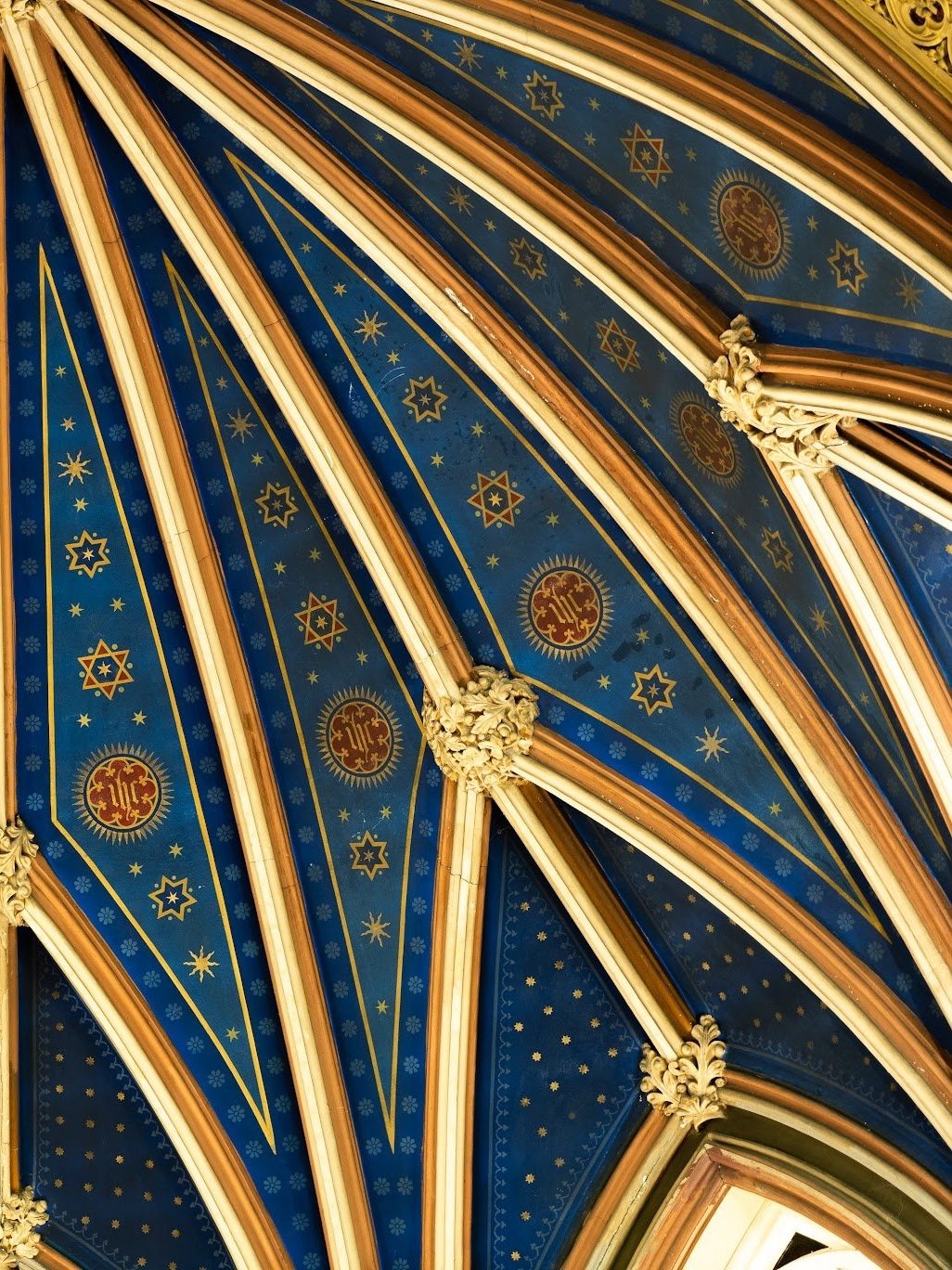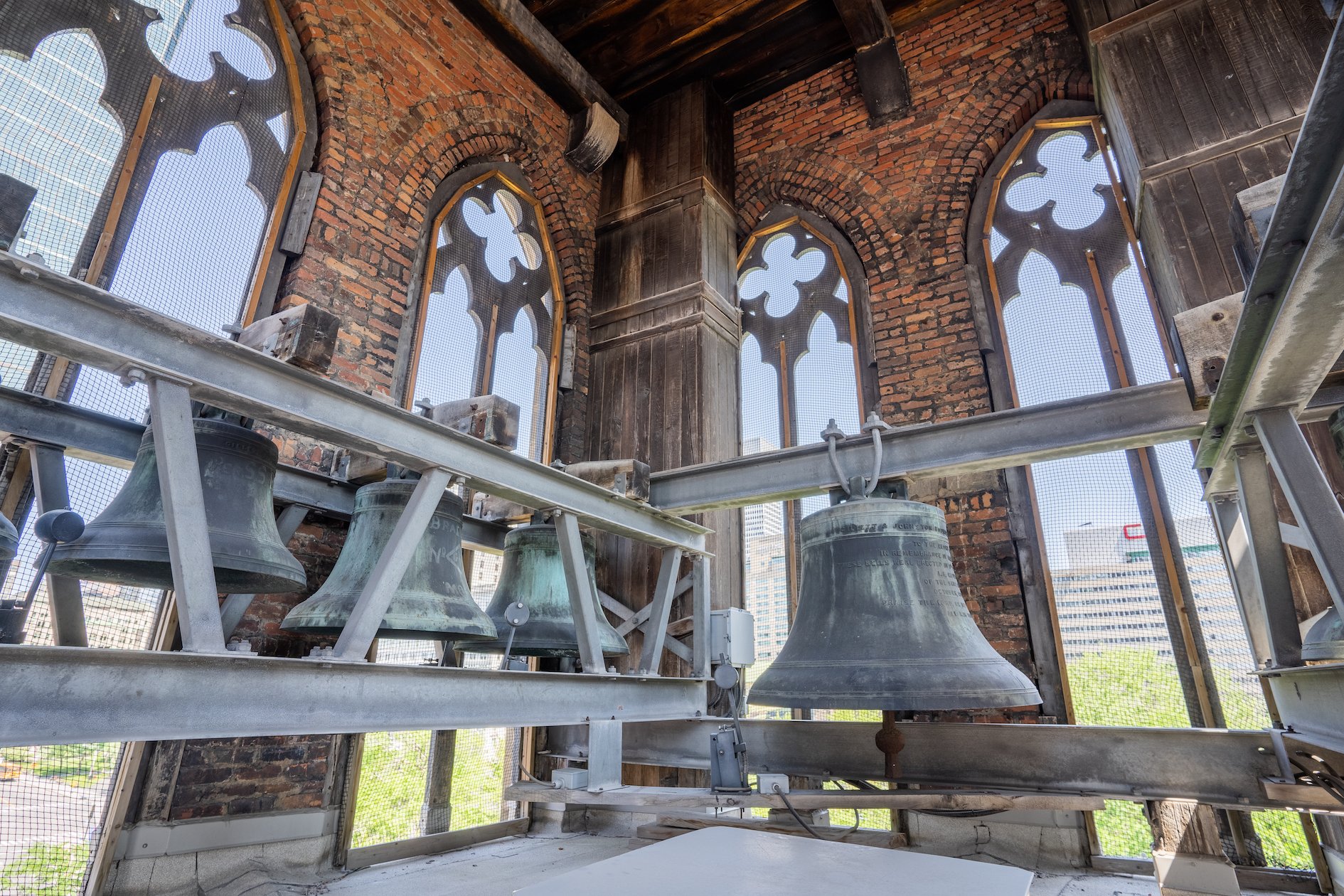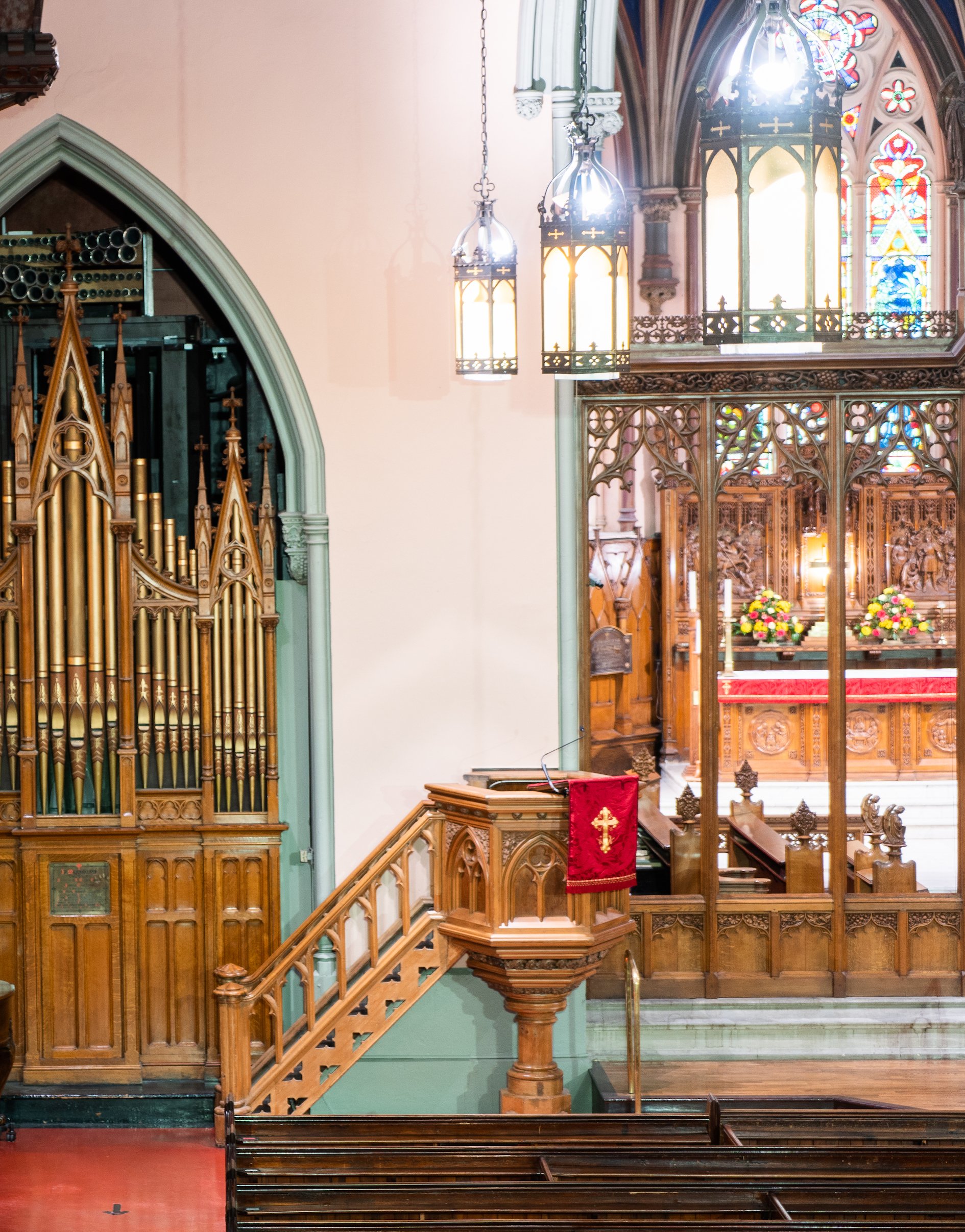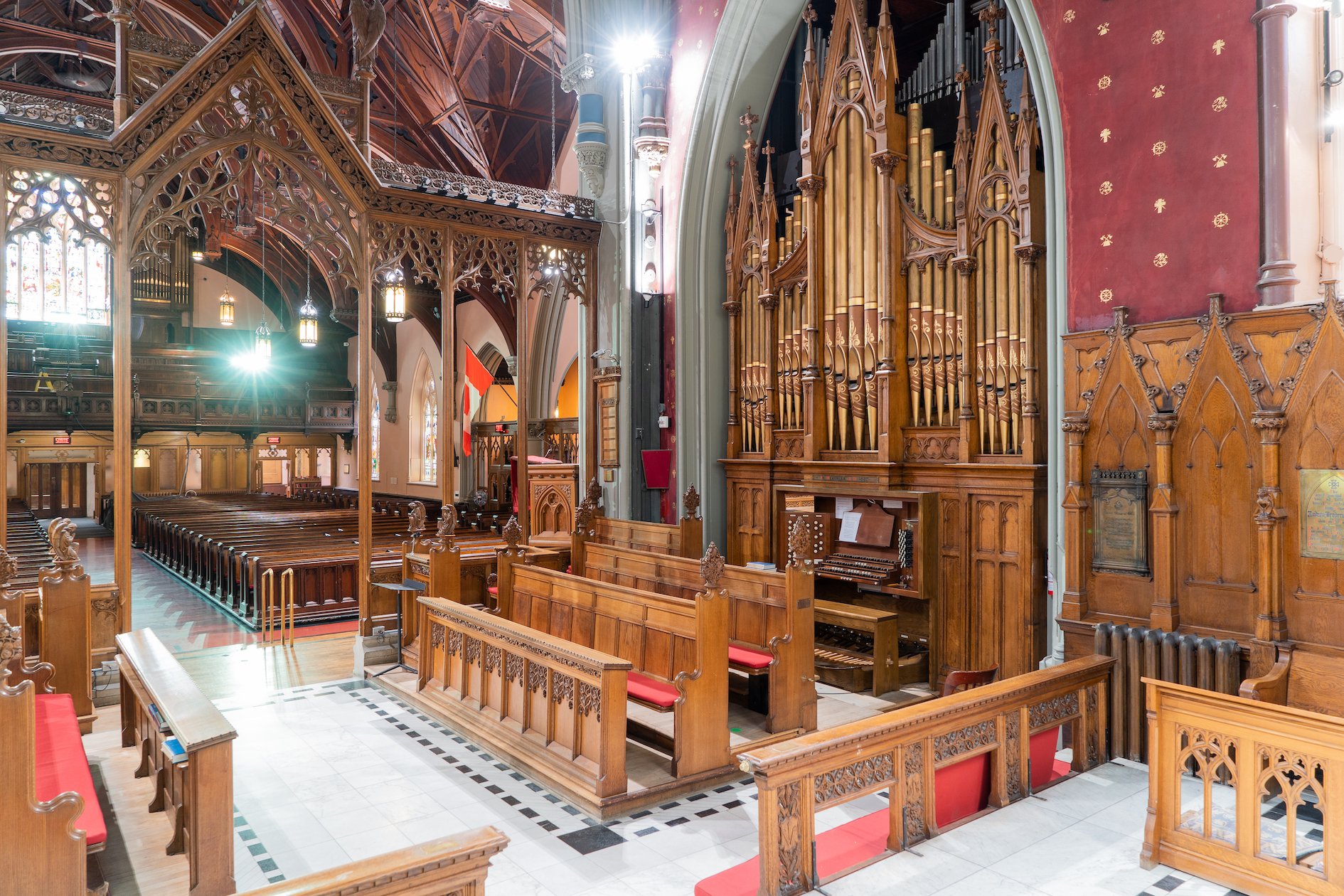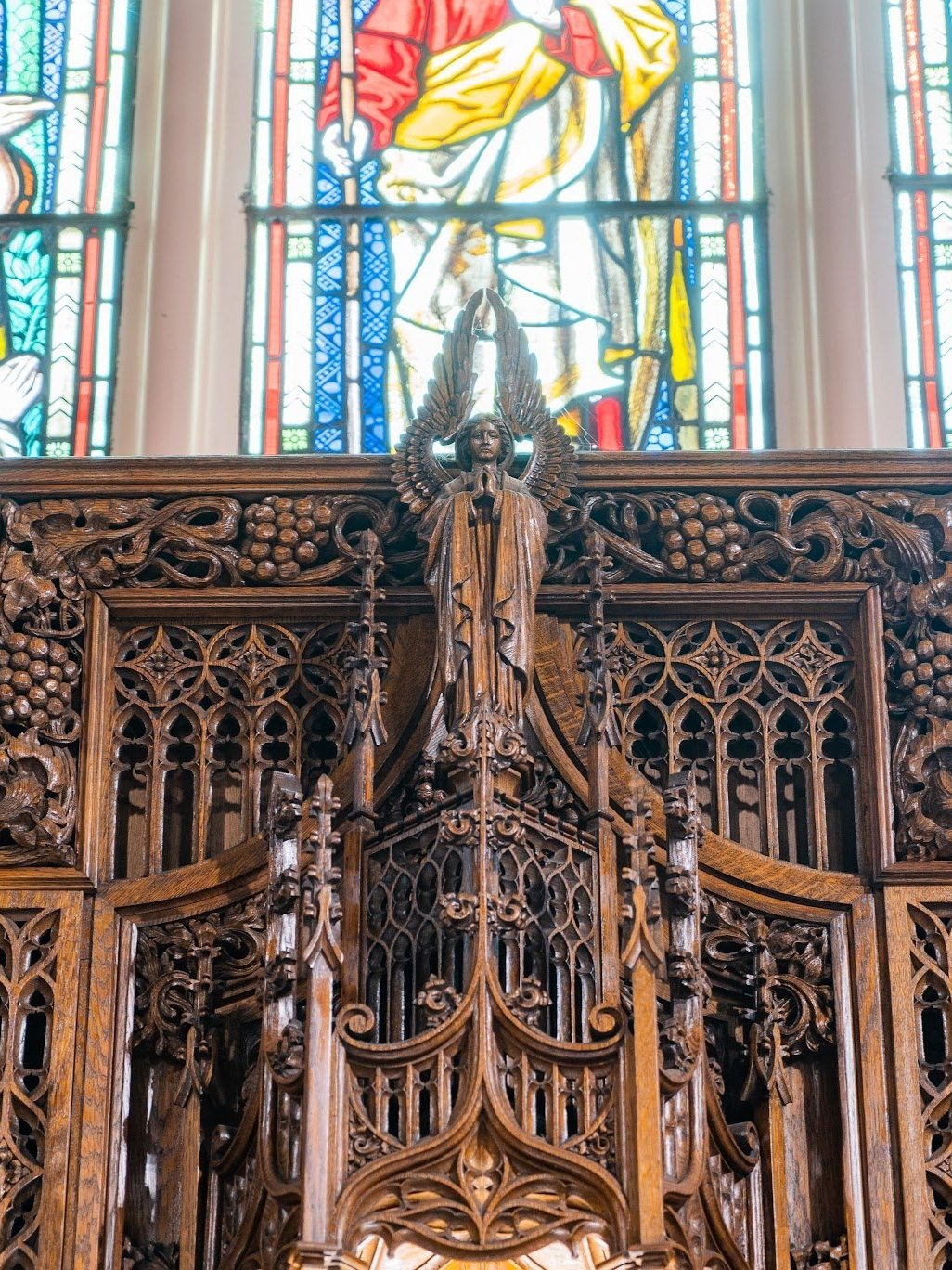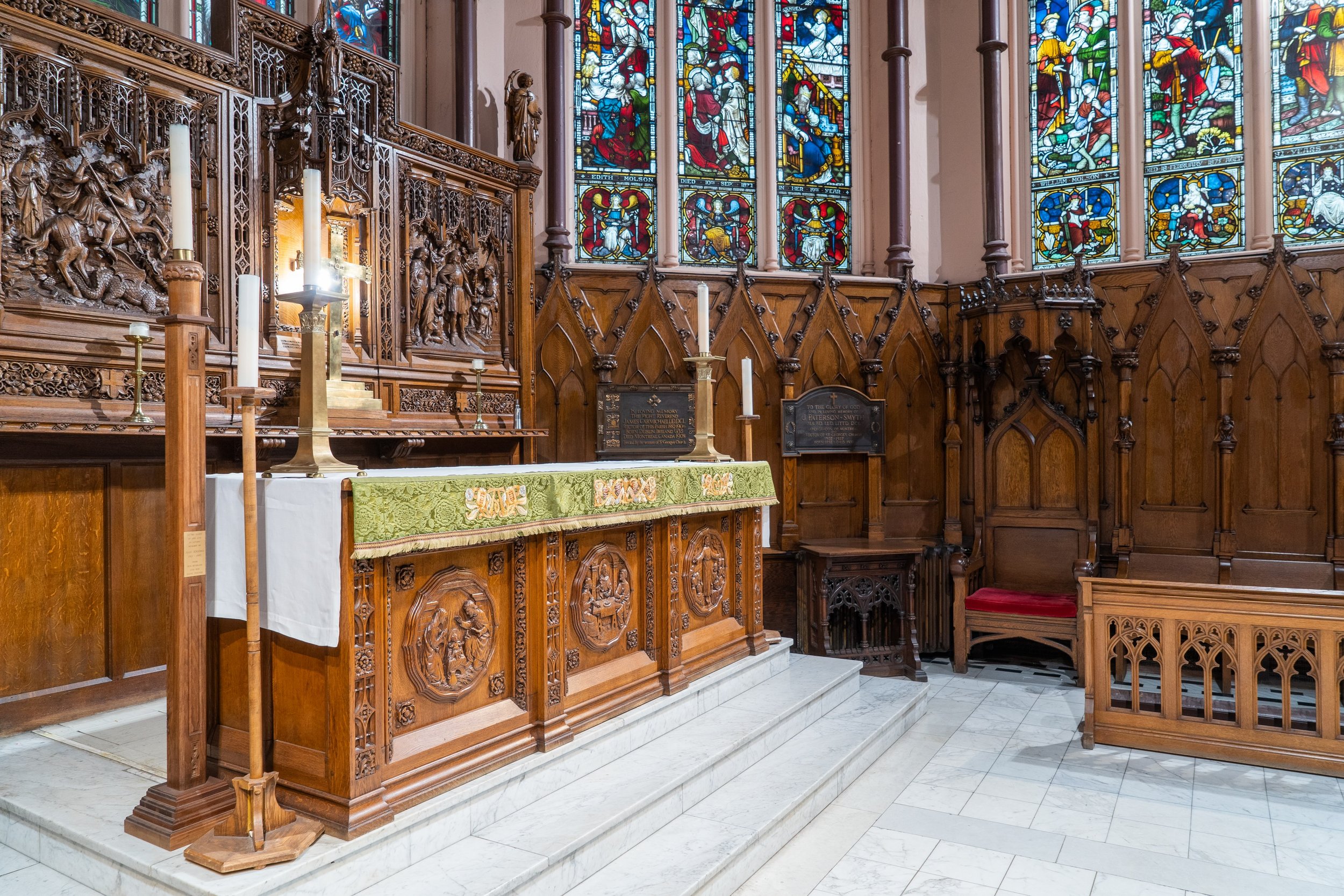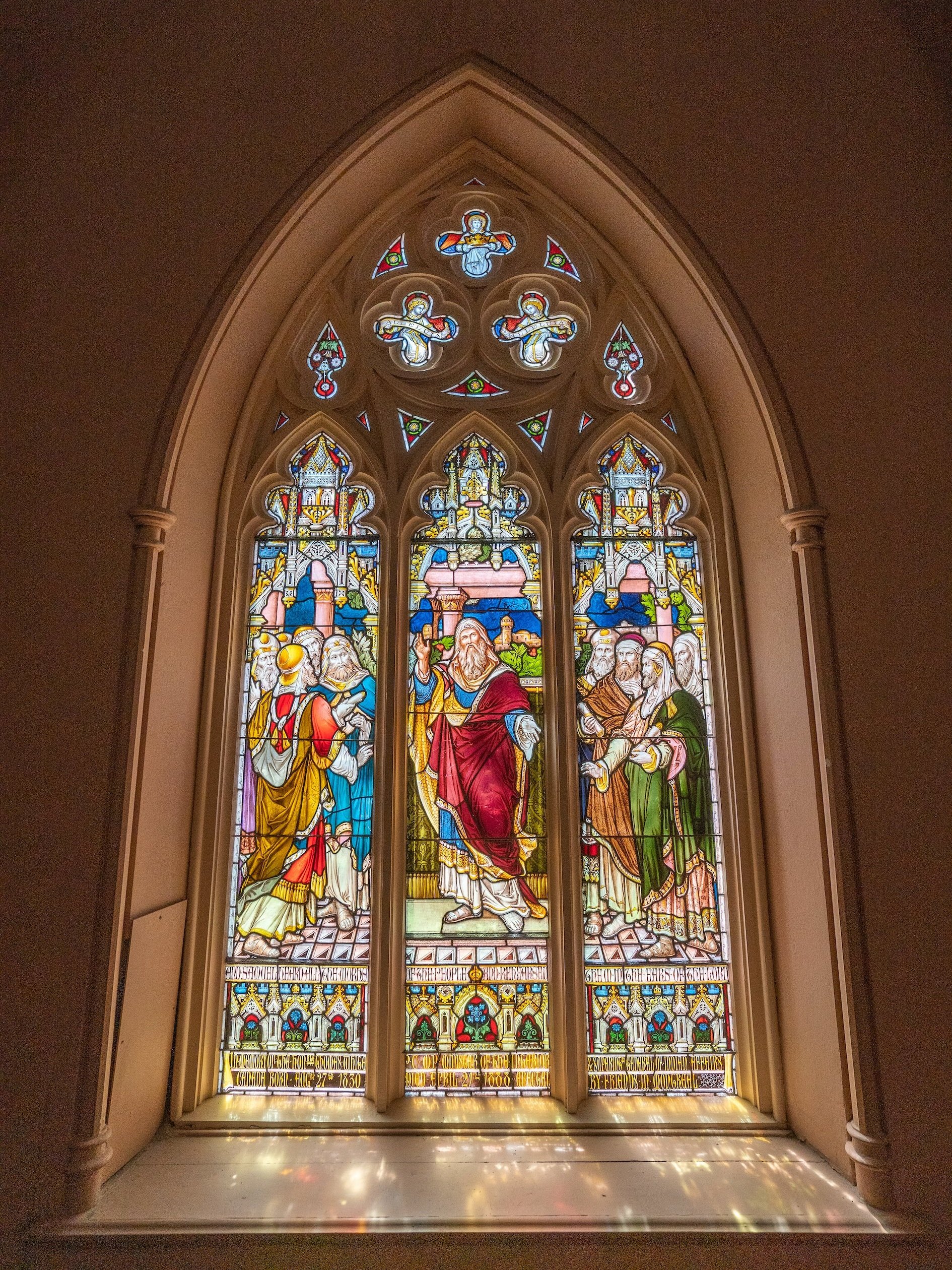
Our History
Explore the unique history of St. George’s, including the fascinating people who built the church and the intricacies of its Neo-Gothic architecture
Our Origins
St. George’s first opened its doors on what is now Notre Dame Street, just outside of the Montréal city walls in 1843 to accommodate the overflow “chapel of ease” from Christ Church Cathedral. The present neo-gothic building was opened for worship on October 9, 1870. Ever since that time, St. George’s has been a lively and active downtown parish known for its exceptional choir, beautiful liturgy and Biblical preaching.
St.George's Opens Its Doors
June 30th, 1843
The original St. Georges opens on what is now called Notre Dame Street, just outside of Montréal's walls to accommodate the overflow from Christ Church Cathedral. Read More
The Present Neo-Gothic Building Opens
October 9th, 1870
Designed by Montréal architect William Tutin Thomas (1838-1891), who took inspiration from 13th-century medieval English architecture. Distinguishing features include the use of the pointed arch and pinnacles. Read More
Bell Tower Completion
1894
The bell tower was designed by Montréal architect Alexander Francis Dunlop (1842-1923) Read More
St. George's Is Given National Historic Site Status
February 23rd, 1990
Our neo-gothic church received national and municipal heritage site status by the Government of Canada. Read More
Our Church Exterior
[as described on a panel placed on the Peel Street side of the garden and generously donated by the Drummond Foundation and in the memory of Guy M. Drummond, Q.C 1915 – 1987]
“Mark Twain’s famous quip about Montreal – “This is the first time I was ever in a city where you couldn’t throw a brickbat without breaking a church window” – was particularly apt for Dominion Square [now Place du Canada] at the end of the 19th century. Of the several churches that were then to be found in the vicinity of the square, only two survive today: the Cathedral-Basilica of Mary Queen of the World and St. George’s Church.
The main part of St. George’s, including the nave and the sanctuary, dates from 1870. Designed by the Montreal architect William Tutin Thomas (1838-1891), it is an excellent example of English Gothic Revival architecture, which is based on a strict interpretation of medieval church architecture of 13th-century England. Another local architect, Alexander Francis Dunlop (1842-1923) designed the bell tower, completed in 1894.
A rich mix of colours was an important aspect of the Gothic Revival movement, and the exterior of St. George’s reflects this trend. The walls combine local grey limestone and imported buff sandstone, and the roof is patterned in coloured slate… A hotel project proposed the demolition of St. George’s, but the scheme was abandoned wit the outbreak of the First World War. Today, this magnificent church stands witness to a residential neighbourhood that has long since vanished.” It also stands ready to welcome are new residential and corporate neighbours as well as the huge number of visitors who come to Montreal every year.
Our Church Interior
The Church’s interior is as breathtaking as its exterior. Ours is one of the finest examples of neo-gothic architecture in the world. The hammerbeam roof ensures that columns are not needed to support the vast, richly carved, ceiling. This contributes to a spectacular view of all aspects of the church’s interior. In fact, the roof span is so vast that it is second only to Westminster Hall. The rich dark wood and vibrant stained glass, add to the architectural beauty – not only making the church unforgettable – but they also speak to the core elements of our faith.
The wide open spaces and rich appointments give the impression of God’s transcendence, assuring us that we are in God’s all-encompassing, eternal, embrace. At the same time, the warm, dark, wood and awe-inspiring stained glass images give us the sense of God’s immanence; as though God is in our very midst, closer than breathing.
Like most churches of the era, St. George’s is cruciform (cross-shaped) in design. The cross is the central symbol of Christianity, epitomizing the paradox that an instrument of pain and death can be transformed – through God’s giving of Godself – into a symbol of healing and new life. Being surrounded by the cross’s shape and form helps us to grasp one of the core spiritual truths of our Christian journey: that it is only through letting go of those things that keep us in the darkness – like fear and despair – that we can truly hold on to those things that draw us to the light – like faith and hope.
Hammerbeam construction
A hammerbeam roof is a type of architectural roof structure that is commonly found in medieval English architecture, particularly in the context of large hall buildings and cathedrals. It is known for its intricate and visually striking design. Ours is only second in size to Westminster Abbey’s span which is four feet longer.
The Pulpit
Sermons have been preached from this pulpit since 1843. To our knowledge it is the only architectural feature that comes from the original church in Old Montreal.
The Coronation Chapel
Positioned to the left of the nave, the coronation chapel features a blue silk damask tapestry that originates from Westminster Abbey in London, where it was used during the coronation of Queen Elizabeth II.
The Church of the Advent Chapel
Positioned to the right of the nave, the Church of the Advent chapel was created as a gift from and remembrance of this Westmount church that closed in 2004 when we welcomed many members of the Church of the Advent community. The chapel is filled with sacred furnishings and plaques from the Church of the Advent including the distinctive highly-decorated reredos.
The Stained Glass Windows
St. George’s Church is blessed with a wealth of beautiful stained glass windows. For example, in the sanctuary are five large lancet windows, from left to right:
The presentation of our Lord in the temple, the Good Samaritan, The Journey to Emmaus, in memory of the Honourable John Elliot.
The Ascension, in memory of the Honourable George Moffat.
The Good Shepherd, in memory of Mrs. Fulford, wife of the first Bishop of Montreal.The raising of Jairus’ Daughter, Teach us to pray, The Call to Samuel, in memory of Edith Molson.
The parable of the Labourers in the vineyard, in memory of William Molson.
The Bells and Clock
The bell tower and clock are two of the many generous gifts that Andrew Frederick Gault, wealthy Montreal businessman and philanthropist gave St. George’s, his home church, in his lifetime. In 1899 he presented the church with its bells, tower clock, and chimes and in 1902 he gave funds towards the building of the bell tower of St. George’s Church. The Bells are from the same foundry as those in the Peace Tower in Ottawa.
When the tower was built, there was much discussion about whether it should have a clock or not. The architect was concerned that a clock might spoil its appearance. In addition, because the clock would be facing Windsor Station, he was also afraid that, if the clock was inaccurate, he would have to face the wrath of the travellers who might miss their train. One wonders if there might have been pressure from Canadian Pacific given that they might face the wrath of travellers when an accurate clock would reveal delays or late arrivals.
The clock was eventually installed and was faithfully on time, losing exactly 6 seconds per year. In an era when the wristwatch had not been invented, and pocket watches more inaccessible under winter apparel, the public clock was of great service to people. The clock was, at that time, illuminated with a 32 to 50-watt candle lamp on each dial. The dials were five feet in diameter and of the best opal glass. It was ordered in 1899 at a cost of 255 pounds sterling. It arrived a year later. Today, thanks to generous contributions from members of the Church community in 2017 the chimes are ringing again.
